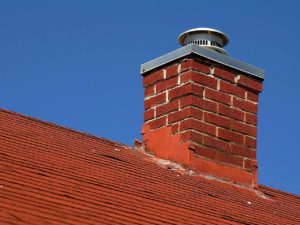
The lining of your chimney is important because it effectively sends or “channels” gases and heat through the chimney itself. It also protects the materials around the chimney from the heat being generated. This is extremely important, since of the materials surrounding the chimney are combustible. In other words, the lining is an essential part of your chimney’s functionality. It also performs an absolutely vital safety function.
From what we’ve discussed so far, you can already see that a damaged or defective chimney liner is a serious concern for any homeowner. Damage or defects often show up in the form of crumbling or cracking. How does a professional chimney inspector determine whether or not your chimney liner has these kinds of problems? By using a special camera that provides a live image of the chimney’s interior. This is the most effective and professional way to determine the health of the chimney liner.
Some people are shocked to learn that some older homes never had a chimney lining to begin with. That’s because the practice of building liners into chimneys was not standardized until relatively recently (we’re talking several decades). Before that, basically all chimneys were built and maintained without any such liner. Government agencies have since determined that unlined chimneys carry unacceptable safety risks, and no modern chimney is built without a high quality liner.
So what exactly is a chimney liner made of? There are three basic kinds. Clay tile liners (also known as flues) will often cost less, but they cost more to install after the fact, since walls typically have to be opened up. Still, when clay tiles are done right, they can last for several decades as long as routine maintenance needs are met. This material will weaken over time, however, eventually resulting in cracked tiles or compromised joints. The resulting safety hazards at the biggest reason why your chimney liner needs to be assessed and possibly replaced.
Another type of chimney liner is “cast-in-place,” which uses a cement-pouring process to create a strong and highly protective liner. This is definitely a professional solution, but contractors love it, because it’s a relatively smooth process for a trained expert, and it provides an excellent long-term value (with very high safety standards) for the homeowner.
Finally, metal chimney liners (i.e. stainless steel) are often preferred by experts in chimney installation and fire safety. The cost to buy and install this type of liner is on the high end of the spectrum, but the end result is extremely effective and long-lasting.
Contact a reputable chimney repair specialist in your area for an accurate assessment, and a straightforward discussion of your options!
